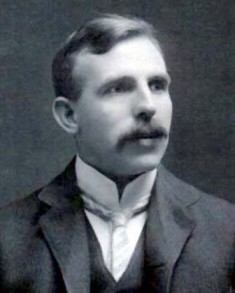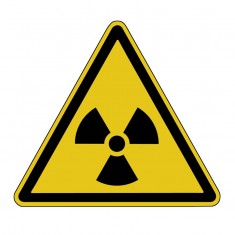| Ernest Rutherford | |
|---|---|
 |
|
| Physicist | |
| Specialty | Nuclear physics & chemistry |
| Born | Aug. 30, 1871 Brightwater, New Zealand |
| Died | Oct. 19, 1937 (at age 66) Cambridge, England, UK |
| Nationality | New Zealander, British |
New Zealander-British physicist Ernest Rutherford was one of the most popular physicists of his era. He is considered as the father of nuclear physics. He coined the terminology “alpha rays,” “beta rays,” “gamma rays” and “half-life” for radio-active decay. Ernest Rutherford was greatly acknowledged in his period as the first physicist to split the atom.
Early Life and Education
Ernest Rutherford was born in Spring Grove, New Zealand, on August 30, 1871. He spent his early education at a government school and at age 16, he entered Nelson Collegiate School, now Nelson College. In 1889, he was granted a University scholarship and then he moved to the University of New Zealand, Wellington, where he joined Canterbury College.
He received his M.A. degree in 1893 with first-class bi-honors in Physical Science and Mathematics. He then carried on with research at the Canterbury College for a short while, getting his B.S. degree the year after.
The Royal Commission for the Exhibit of 1851 started a scholarship that permitted graduate students of universities of the English Empire to travel any place in the world and focus on research and investigation of importance to their homeland’s industry. With this news, Ernest came back to Canterbury College in 1894.
He also continued his research from his undergrad and graduate careers. Then, he won the scholarship grant and went to Cambridge University in England. At Cambridge University, he was given a chance to work with Professor J.J. Thomson at the Cavendish Lab. In 1900, he married Mary Newton, the only child of his landlady in Christchurch.
Work, Research and Contribution
In a course of just three years, Rutherford expertly marked off a totally new branch of physics known as radioactivity. He researched under Joseph John Thomson and in 1896, he developed the most sensitive electro-magnetic wave detector, efficient at determining waves at a range of many hundred meters.
Also, he demonstrated that X-rays make air molecules to split-up into even numbers of positively as well as negatively charged particles, called ions. While researching radioactivity in 1899, he discovered two forms of radiation emitted by the elements thorium and uranium which he referred to as ‘alpha’ and ‘beta.’ These two rays were differentiated based on the penetrating power.
Work with Radioactivity
In 1902, Rutherford defined radioactivity as a reflection of change in sub-atomic level. In 1903, he worked with Frederick Soddy, a radiochemist on the “Theory of Atomic Disintegration,” demonstrating that some heavy atoms automatically decay into lightweight atoms, and coining the phrase “half-life” for radio-active decay.
Three years later, Rutherford suggested a measure of relative decay rate of atoms of uranium that could allow mineral deposits to be precisely dated, a radioactive dating system that reduced the estimate of the Earth’s age, and developed the foundation of dating technologies still employed in geology. In 1907, his research demonstrated that the ‘alpha’ particle is nothing but a helium atom with no electrons.
In 1908, he worked with his university student Hans Geiger and designed the ‘Rutherford-Geiger’ detector, capable to detect single particles emanated by radio-active atoms. In 1911, he explained in more detail the ‘nuclear model’ of the atom. During 1913, along with Jeffrey Moseley, Ernest used cathode-ray bombardment to demonstrate that the internal structures of the atoms could be used to specify an atomic-number to every element.
The next year, he explained the proton. In 1917, he successfully came up with the discipline of nuclear physics by carrying out a number of experiments displaying that the nucleus of a few light elements can be decomposed by the process of radioactivity, and also that rapid protons were released on this process. Then, he was crowned the very first scientist to split-up an atom (not by fully artificial means), transforming nitrogen in to oxygen.
Awards and Honors
In 1908, Ernest was awarded the famous Nobel Prize in the field of Chemistry for his breakthroughs and successful research in to the process of element’s disintegration and the associated chemistry of radioactive substances. He supervised many scientists, the most well-known ones being Thomas Sinton Walton, James Chadwick, Edward Appleton, John Cockcroft, and all of whom awarded Nobel Prizes for their own atomic reactions, neutron discovery, chemical studies on articles and ionosphere.
Death
On October 19, 1937, Rutherford passed away in Cambridge, England, at the age of 66, due to complications related to a strangulated hernia.
